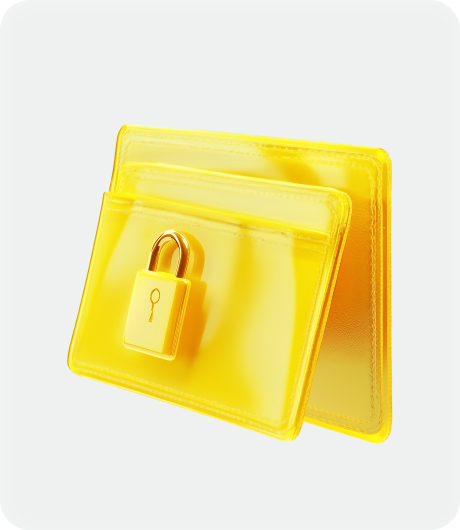Been scammed?
We’re here to help
you take the right
actions
Take the right steps after being scammed and learn how to
safeguard against future threats.

7 key actions to take after
you’ve been scammed

Stop all transactions
Immediately halt any further transfers to suspicious accounts.

Secure your crypto wallets and accounts
Change passwords and enable two-factor authentication (2FA) for all your crypto wallets, exchanges, and email accounts.

Document everything
Collect all details related to the scam — screenshots, emails, transaction IDs, and any communication you’ve had.

Contact your financial institution
Notify your bank or crypto exchange to see if they can freeze or reverse transactions.

Report the scam
Use official reporting channels in your country to alert authorities and help prevent others from falling victim.

Stay calm and seek support
Reach out to victim support groups or legal resources that specialize in crypto scams.

Share Your Experience
Raise awareness by sharing your story on international crypto communities.




How do people get scammed?
Learn how to identify the stages in a scam to understand how to protect yourself or someone you know.
Read the full article

Get help wherever you are
No matter where you are in the world, getting the right support after a crypto scam is crucial. Find local resources, legal guidance, and reporting tools specific to your country, so you can take the next steps with confidence.
FAQs
Here are some common questions about crypto scams and resources available for victims.
What should I do immediately after a crypto scam?
Secure your accounts by changing all associated passwords and disconnecting from suspicious platforms. Document the scam, including transaction details, wallet addresses, and messages. Contact your crypto exchange to report the fraud and request a freeze if possible. File a report with law enforcement or cybercrime units. Work with blockchain forensics companies to trace stolen funds. Quick action increases the chances of protecting remaining assets and initiating recovery processes.
Can lost cryptocurrency be recovered?
Recovering lost cryptocurrency is possible but challenging. Use blockchain explorers to trace transactions and collaborate with blockchain analytics firms to identify scammers. Report the crime to law enforcement and notify exchanges where the funds were transferred. If the stolen funds are on centralized platforms, they might freeze them. While not guaranteed, combining quick action with expert help can improve recovery chances.
How do I report a crypto scam?
Document all scam details, including wallet addresses, transaction IDs, and screenshots. Report the incident to your local law enforcement and relevant cybercrime agencies, such as the FBI’s IC3 or Action Fraud. Notify the crypto exchange where the transaction occurred and provide evidence. Use blockchain analytics services to assist investigations and enhance your report.
How can I protect myself from crypto scams?
Use secure wallets with two-factor authentication, avoid unsolicited messages, and only engage with verified platforms. Research projects thoroughly, checking for unrealistic promises or anonymous teams. Stay informed about common scams and update your security settings regularly to protect against new threats.
What are the red flags of a crypto scam?
Red flags include high-return promises, unsolicited investment offers, requests for private keys, fake websites, and urgency tactics. Always verify platforms and teams before engaging and be cautious of any entity that pressures you to act quickly or share sensitive information.
Types of crypto scams
Understanding the various types of crypto scams is vital for protecting yourself. Explore our
comprehensive list to learn how to identify and avoid these threats.
Phishing Scams
How do phishing scams in crypto steal sensitive data, and how can you avoid falling victim?
Continue Reading





